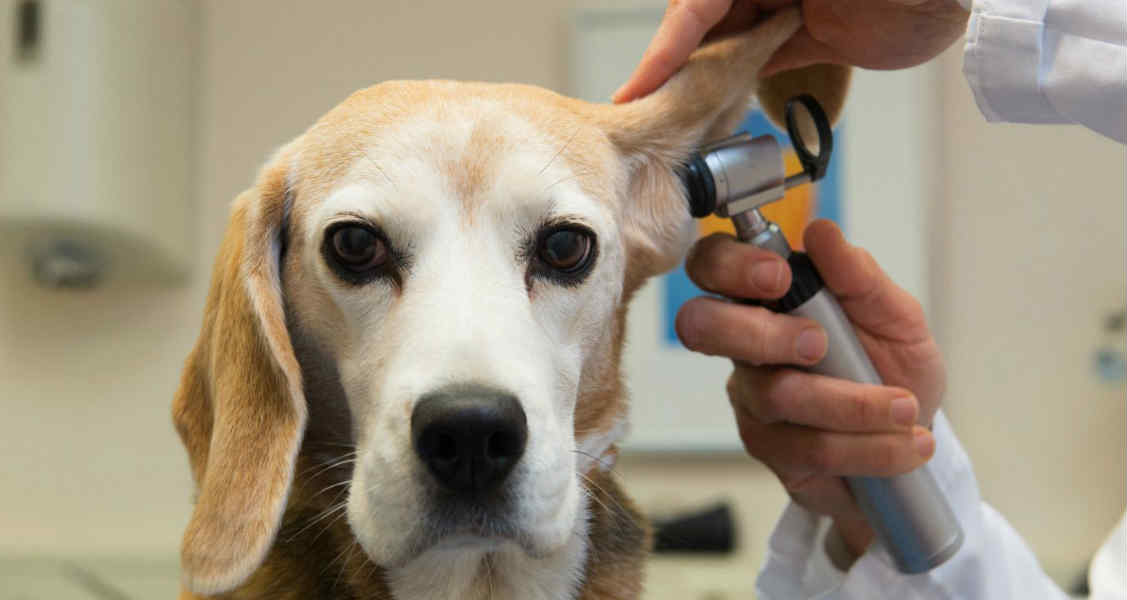When a “Stroke” Is Not Really a Stroke…It’s Vestibular Disease
By: Dr. Ryan Llera, B.Sc., DVM | Sep 6, 2017

“I think he had a stroke!” This is one of the most common phrases heard in a veterinary clinic for a not-so-common condition. Vestibular disease is something that we mostly see in dogs but I have seen it in a couple of cats. It can be very scary to a pet owner but in actuality, it is typically not as bad as they may fear.
Have you ever been seasick? Or sat in a swivel chair spinning around then tried to walk normally afterwards? If not, try it now…I’ll bet you’re stumbling all over and probably dizzy as you get out. Great, now you know what these animals are experiencing. The human medical condition most closely related would be vertigo.
Vestibular disease occurs when a portion of the middle ear is affected causing this imbalance. This area of the ear canal is innervated by the vestibulocochlear nerve (cranial nerve VIII) and it is responsible for both hearing and balance. In some cases, the facial nerve (cranial nerve VII) can also be affected as they are directly adjacent to each other. This is where some people see a recognizable sign of a stroke, as defined in a human when the face seems paralyzed or drooping of the lips on one side. This is not as commonly seen as the other signs.
The visible signs of vestibular disease do tend to cause some alarm because it can be so disturbing. Ataxia, or stumbling around and being unable to walk is typically the first sign noticed and often times can be severe enough that animals will fall down or be unable to walk. Many patients will also have a head tilt, leaning towards the affected side. This can be absent if both sides are affected. Also disturbing is nystagmus, which is the technical name for a repetitive twitching of the eyes.
So why is it not a stroke? A stroke involves a blood clot being lodged into a vessel preventing flow and oxygenation to an area. Vestibular disease does not involve blood clots. In a young dog, we often target a middle ear infection as the cause for this condition. In an older dog, they could have a brain lesion (inflammation or a tumour) or most commonly we see this in older dogs and we don’t know the reason (we call this idiopathic).
A physical exam will be needed with your veterinarian to help narrow down the cause of the problem. We will look in the ear to assess the canal and eardrum. Evaluation of the eyes and their movement can help us determine which side is affected. In older patients, we will often recommend some baseline blood tests to check for other problems that might be complicating the diagnosis or treatment. In some cases, we may recommend radiographs (X-rays) of the skull to help evaluate for ear issues related to a structure called the bulla. If we do suspect a brain lesion, we may refer you to a specialist for more advanced imaging.
There is some good news despite all this! The overall outcome of these cases is positive for a large majority of them. For ear infections, we can treat with systemic antibiotics. For the other causes and ear infections, we treat the patient symptomatically to help control the nausea and motion sickness. Aside from this, sometimes it just takes good nursing care at home and the tincture of time. Again, many of these patients do well and recover however in a very few instances a slight head tilt may remain.
Wrapping up here, I just want to say that this condition is not as scary as one might initially think. It’s still wise to have your veterinarian check your pet over and provide recommendations to help them manage. You should take your pet to its veterinarian as soon as you see any of the signs because the symptoms are so similar to that of other more serious conditions: such as a stroke, brain tumour, or seizure. Not all cases of vestibular disease can be easy to figure out, but hopefully, I’ve helped remove some of the fear you might experience if you see this in your pets.


Disclaimer: healthcareforpets.com and its team of veterinarians and clinicians do not endorse any products, services, or recommended advice. All advice presented by our veterinarians, clinicians, tools, resources, etc is not meant to replace a regular physical exam and consultation with your primary veterinarian or other clinicians. We always encourage you to seek medical advice from your regular veterinarian.

